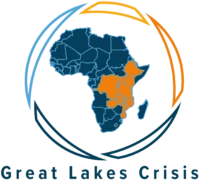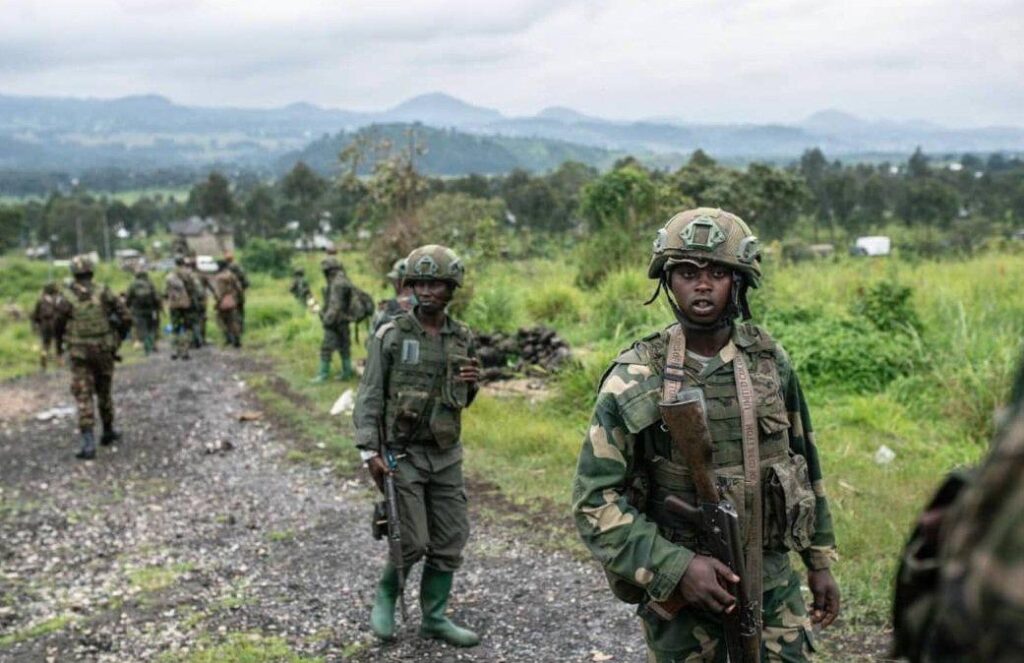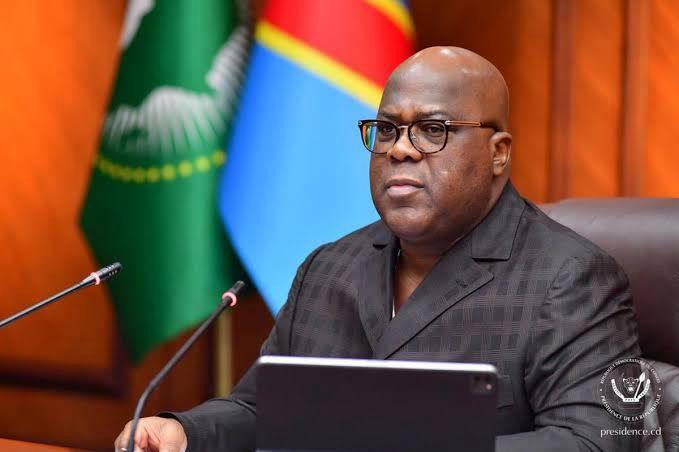The resurgence of the March 23 Movement (M23) in the eastern Democratic Republic of Congo (DRC) has heightened tensions in the Great Lakes region, exposing deep-seated historical grievances, political instability, and the strategic interests of regional actors. Far from being a localized conflict, the M23 rebellion reflects broader geopolitical struggles involving neighboring states—particularly Rwanda, Uganda, and Burundi—whose involvement, whether direct or indirect, continues to shape the trajectory of the crisis.
This article provides an analysis of the origins of the M23 rebellion, the historical context of ethnic conflicts in the region, the nature of previous peace agreements, and the regional dynamics that perpetuate instability in eastern DRC.
Historical Background: Ethnic Divisions and Colonial Legacies
The conflict in eastern Congo is complex, delicate, and protracted. The roots of the crisis extend beyond M23 and are deeply tied to historical ethnic tensions, colonial-era policies, and post-independence power struggles (Purdeková & Mwambari, 2021).
The ethnic tensions between the Hutu, Tutsi, Hunde, and Nyanga communities can be traced back to pre-colonial times but were exacerbated by colonial policies. The Berlin Conference of 1884 arbitrarily divided African ethnic groups across modern nation-states, leading to tensions between indigenous Congolese communities and Banyarwanda (Hutu and Tutsi migrants) (Scorgie, 2013). Many Banyarwanda had already been living in Kivu before colonial borders were drawn, while others were brought by Belgian authorities in the 1940s-1950s as laborers to support economic production during World War II (Kennes, 2024).
In 1960, Congo was divided into four sections, with the eastern region, led by Antoine Gizenga in Stanleyville (Kisangani), becoming a hub of political opposition. Following independence, the Mobutu regime granted citizenship to the Banyarwanda in 1972 but later reversed this policy in 1981, fueling ethnic tensions. By the 1990s, as multiparty politics emerged, ethnic conflicts intensified, with commissions in North and South Kivu labeling certain Banyarwanda as “non-Congolese,” sparking waves of violence (Tunamsifu, 2017).
The arrival of Rwandan refugees following the 1994 genocide further complicated the situation. Hutu militants associated with the Democratic Forces for the Liberation of Rwanda (FDLR) sought refuge in eastern Congo, launching attacks against Rwanda and creating security concerns for Kigali (Baudon, 2024). The interplay of ethnic identity, colonial legacies, and competition for resources laid the groundwork for future conflicts, including the M23 rebellion (Reyntjens, 2020). Given these deep-rooted historical grievances, can peace truly be achieved without first addressing colonial-era injustices and their lingering effects?
The Origins of the M23 Rebellion
The M23 rebellion traces its roots to the 2012 mutiny of Congolese soldiers who were formerly part of the National Congress for the Defense of the People (CNDP), a rebel group that had been integrated into the Congolese armed forces (FARDC) as part of a 2009 peace deal (Shepherd, 2018). The CNDP, largely composed of Tutsi fighters, had previously received backing from Rwanda in conflicts against the DRC government. However, the integration process was marred by distrust, lack of structural reforms within FARDC, and failures to uphold key provisions of the peace agreement (United Nations Security Council, 2024).
When former CNDP fighters, led by Bosco Ntaganda and Sultani Makenga, defected from FARDC in 2012, they formed the M23, named after the March 23, 2009 agreement, which they accused the Congolese government of violating. Their grievances included:
- Failure to Integrate CNDP Fighters Effectively – Many ex-rebels faced discrimination, lack of promotions, and arbitrary arrests within FARDC.
- Unmet Political and Security Guarantees – The government had promised to implement local governance reforms and address the security concerns of Kinyarwanda-speaking communities in eastern DRC.
- Economic Motivations – The control of mineral-rich territories in North Kivu provided both an incentive for rebellion and a means to sustain the movement financially (Sanderson, 2025).
By late 2012, M23 had taken control of Goma, the provincial capital of North Kivu, before being militarily defeated in 2013 by the Congolese army, supported by the United Nations’ Force Intervention Brigade (FIB) (France 24 Africa, 2013). The remnants of M23 fled to Rwanda and Uganda, where they remained dormant for nearly a decade before re-emerging in 2021.
The Coalition of AFC and M23
The Recent Fall of Goma and Military Deployments
In late January 2025, M23 made significant territorial gains, culminating in the fall of Goma once again. The renewed offensive, which took place from January 23 to January 30, 2025, overwhelmed the Congolese forces, prompting an urgent response from the regional and international community. In response, the East African Community Regional Force (EACRF) was deployed to stabilize the region. Additionally, the Southern African Development Community’s (SADC) SAMI DRC mission was launched to counter M23 advances and reinforce Congolese government forces. Reports also indicate the presence of foreign mercenaries supporting both government and rebel forces, further complicating the security landscape.
The Peace Agreements and Their Shortcomings
Several peace agreements were designed to integrate M23 fighters and address their grievances, but they largely failed due to political reluctance, weak institutional reforms, and shifting regional alliances. (Baudon, 2024).
- The 2009 Agreement (CNDP Integration into FARDC)
- Promised amnesty for CNDP rebels.
- Pledged to integrate former rebels into FARDC and political institutions.
- Guaranteed the safety and recognition of Tutsi communities in eastern DRC.
- The 2013 Nairobi Declaration
- M23 agreed to disband and demobilize in exchange for political reintegration and safety guarantees.
- The DRC government pledged not to prosecute M23 members except for those involved in war crimes.
- Fighters were to be resettled or reintegrated into civilian life.
Despite these commitments, the Congolese government was slow to implement the agreements, leading to renewed grievances. Some former M23 fighters were arrested, while others faced discrimination, reinforcing the perception that the DRC had failed to honor its promises.
The Role of Regional Powers
The M23 conflict is deeply intertwined with the strategic interests of regional actors, including Rwanda, Uganda, Burundi, and South Africa. (MINAFFET, 2024).
- Rwanda: Kigali views eastern DRC as a security threat due to the presence of the FDLR, a Hutu rebel group linked to the 1994 genocide. Rwanda has been accused of supporting M23 to counterbalance FDLR influence and benefit from illicit mineral trade.
- Uganda: While Uganda denies involvement, historical ties between M23 leaders and Ugandan military elements have raised suspicions about its role in the conflict.
- Burundi: Bujumbura has deployed troops in eastern DRC to counter Burundian – RED-Tabara rebels, operating in the region, further complicating the security landscape.
- South Africa: As a key SADC member, South Africa has deployed troops under the SAMIDRC mission to stabilize eastern DRC.
Diplomatic Efforts: The Luanda and Nairobi Processes
Recent diplomatic efforts to resolve the crisis have centered on the Luanda Process, led by Angola, and the Nairobi Process, facilitated by the East African Community (EAC). These initiatives seek to encourage dialogue, promote ceasefires, and address the underlying political and security concerns fueling the conflict.
Conclusion
The M23 rebellion is not merely a Congolese insurgency; it is a manifestation of deep-rooted regional rivalries, economic interests, and historical grievances. The failure of past peace agreements, coupled with the strategic involvement of neighboring states and foreign interests, has prolonged the conflict, making stability increasingly elusive.
Moving forward, resolving the M23 crisis requires a multi-faceted approach:
- Inclusive Political Dialogue – The DRC government must address the grievances of Kinyarwanda-speaking communities while ensuring justice and accountability.
- Stronger Regional Cooperation – The Great Lakes states need to establish mechanisms to address security concerns without resorting to proxy wars.
- Economic Reforms and Resource Management – Transparent governance of DRC’s vast mineral wealth could reduce the economic motivations behind armed conflicts.
Ultimately, dialogue remains the only viable path to lasting peace in eastern Congo, as military interventions alone have proven insufficient in addressing the root causes of the conflict. But given the persistent cycle of failed agreements and shifting alliances, one must ask: Is the international community’s role in this crisis truly impartial, or does it also serve strategic interests?
References
Baudon, A. (2024, August 9). M23: A forgotten war and an overshadowed ceasefire. International Centre for Counter-Terrorism. https://www.icct.nl
France 24 Africa. (2013, December 13). DR Congo signs peace deal with M23 rebels. France 24. https://www.france24.com
Kennes, E. (2024, July 19). What does Rwanda want in the DRC? Egmont Institute. https://www.egmontinstitute.be
MINAFFET. (2024, February 18). Rwanda clarifies security posture. https://www.minaffet.gov.rw
Purdeková, A., & Mwambari, D. (2021). Post-genocide identity politics and colonial durabilities in Rwanda. Critical African Studies, 14(1), 19-37. https://doi.org/10.1080/21681392.2021.1938404
Reyntjens, F. (2020). Path dependence and critical junctures: Three decades of interstate conflict in the African Great Lakes region. Conflict Security and Development, 20(6), 747-762. https://doi.org/10.1080/14678802.2020.1852720
Sanderson, S. (2025, April 2). DRC crisis: What does it mean for South Africa? DW. https://www.dw.com
Scorgie, L. (2013). Prominent peripheries: The role of borderlands in Central Africa’s regionalized conflict. Critical African Studies, 5(1), 32-47. https://doi.org/10.1080/21681392.2013.774550
United Nations Security Council. (2024, December 27). Security Council Resolution 2738 (2024).
Tunamsifu, S. (2017). The international conference on the great lakes region. The Journal for Transdisciplinary Research in Southern Africa, 13(1). https://doi.org/10.4102/td.v13i1.387


